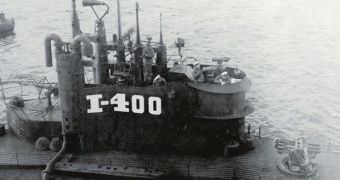In December 2013, underwater explorers with the University of Hawaii and the US National Oceanic and Atmospheric Administration found the wreckage of a World War II-era submarine in the waters off the coast of the island of Oahu in the Pacific.
Recently, the team returned to the area and spent some time exploring the submarine’s remains. They managed to track down and film the watercraft's hangar, its navigation platform, and even its bell.
To attest to their finds, the underwater archaeologists behind this research project released a short video showing the newly discovered bits and pieces of the submarine’s anatomy resting on the ocean floor. The video in question is available below.
In an interview, operations director Terry Kerby explained that, since the team did not have a proper underwater map to work with, they had to rely on instinct to find and film the submarine’s remains.
“We made a lucky guess where to start when we approached the main hull of the I-400 from the northwest. Our guess started to pay off when the giant hangar door came into view, followed by the conning tower and hangar,” Terry Kerby said.
Since the submarine used to belong to the Imperial Japanese Navy, a 73-minute documentary showing footage of it lying at the bottom of the Pacific Ocean will air in Japan a week from now, on May 6.
The submarine was sunk by US forces
This World War II-era submarine, measuring an impressive 400 feet (a little over 121 meters) from one end to the other, was sunk by US military forces not far from Pearl Harbor back in 1946.
Interestingly, the submarine was sunk not in combat, but after having been captured. Historians say that the US military ordered that the submarine be sent on a one-way trip to the bottom of the ocean to make sure the Soviet Union would not get its hands on its technological innovations.
More precisely, this submarine, together with four others captured from the Japanese army, was sunk in response to the Soviet Union's demanding to inspect them. Once the deed was done, US forces pretended not to know anything about the watercrafts' location.
“The goal was to keep their advanced technology out of Soviet hands during the opening chapters of the Cold War,” Terry Kerby and his team of explorers offered as an explanation for this behavior.
Prior to the development of the first nuclear-powered submarines in the 1960s, this recently discovered watercraft was among the largest and the deadliest an army could hope for. These days, it's idling under 2,300 feet (700 meters) of water.

 14 DAY TRIAL //
14 DAY TRIAL // 